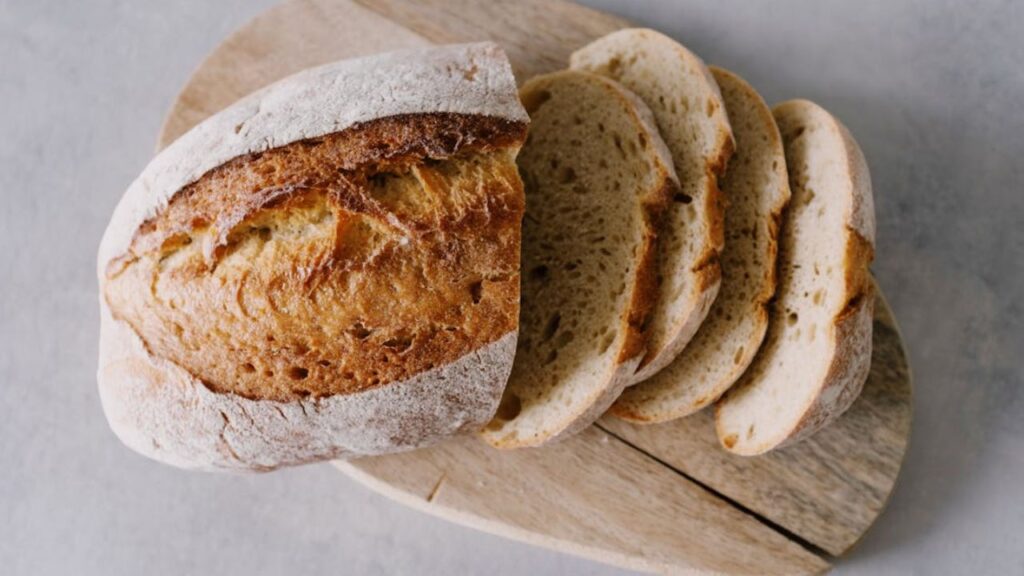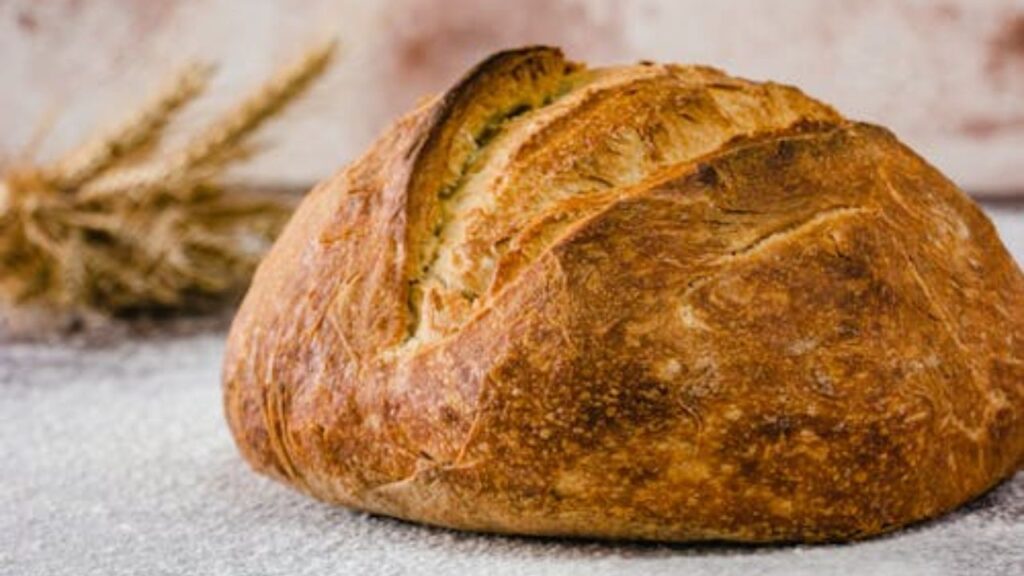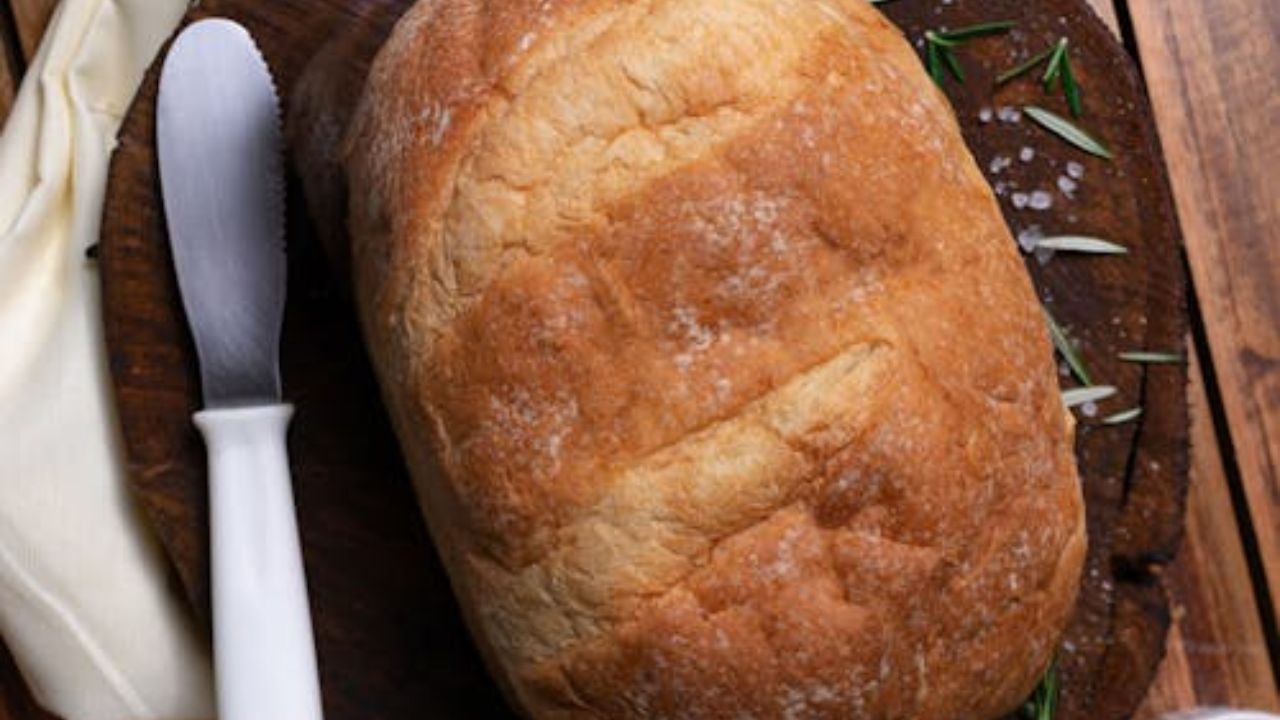Salt Rising Bread is a secret gem of home-made baking. With its illustrious history, unusual fermentation style, and peculiar taste, it’s an up-and-coming recipe worth trying. As opposed to conventional yeast breads, this loaf depends on an intriguing bacterial fermentation process and results in heavy, moist crumb and cheesy, savory smell. In this article, we’ll go deep into the secrets of Salt rising recipes Bread, discuss rising recipes for a home cook, and give tips to become a master of this old-fashioned delight.

What Is Salt Rising Bread?
Salt Rising Bread is an American bread that goes back to the 1800s. Its name came from the use of salt to promote fermentation, not yeast, to allow the dough to rise. Instead, a starter, consisting of cornmeal, potatoes, or flour, catches on wild bacteria (such as Clostridium perfringens) that make gas, creating a lift for the dough. The outcome is a bread which has a tight crumb and has a golden crust and has a tangy, almost cheesy flavor. This technique emerged out of a necessity when a scarcity of yeast occurred, nowadays; it’s valued for its rugged appeal. Although difficult to perfect, successful execution of this rising recipe provides a tasty treat of culinary history.
The History Behind This rising recipes
Salt Rising Bread originates with country kitchens of Appalachia and pioneer kitchens. Settlers required bread which did not require the commercial yeast, and they experimented with natural fermentation. The “salt rising” name exists because salt was added to the starter, which assisted in the reduction of unwanted bacteria and increase of heat-loving microbes. Families handed down their starters as though they were heirlooms, tinkering with recipes using such ingredients as milk or potato water. Although not common anymore, this bread is still a symbol of ingenuity. Resurrecting this up and coming recipe helps contemporary bakers return to the days of imagination and patience in the kitchen.
The Science of the Rise: How Fermentation Works
Its uniqueness is the use of bacterial fermentation, not yeast. The starter mixture; usually warm milk, cornmeal, and salt, provides conditions for growth for the heat loving types of bacteria. These microbes give off Carbon dioxide and hydrogen gas, which raise the dough. The process entails strict temperatures (approximately 100°F – 115°F) so as to maintain the bacteria active. Rather than wild yeast, which is what sourdough uses, this technique bypasses the tangy acidity for a mellower, savory character. Understanding this science is key: too cold and the bacteria will not work, too hot and they’ll die. It is a fine balance that makes this rising recipe, both challenging as well as intriguing.
How to Make Salt rising recipes at Home
Ready to taste this emerging recipe? Start with a simple starter: put ½ cup cornmeal, 1 cup of scalded milk and 1 tsp salt in a jar. Cover and leave to sit in a warm place (like an oven with the light on) for 8–12 hours. When bubbles appear and it has an earthy odour (like popcorn or cheese), add starter to flour, water and a little sugar to make the dough. Knead lightly, rise until doubled in bulk, and bake at 375°F. until golden. The main thing here is to preserve warmth – a heating pad, a warm water bath, if necessary. Patience is important but the prize is a loaf with a crackly crust and cooked insides.

Tips for Perfecting Your Rising Recipe
Salt Rising Bread can be temperamental, but these tips boost success:
- Use non-chlorinated water—chlorine can inhibit bacteria.
- Keep your starter warm (100°F–115°F) using a thermometer.
- Smell matters! A good starter has a pungent, cheesy aroma—not rotten.
- Avoid metal bowls; use glass or ceramic for fermenting.
- If the starter fails, try adding a pinch of baking soda to jumpstart bacteria.
- Bake in a loaf pan for even rising.
- Slice thin—this bread is dense and rich.
With practice, you’ll learn to troubleshoot and adapt this rising recipe to your kitchen’s conditions.
Common Mistakes (and How to Fix Them)
Even professionals bakers are not spared from hiccups with Salt Rising Bread. If your starter is not bubbling, it could be too cold, and you’d better place it in a warmer place. A foul smell; this entails and indicates that harmful bacteria thrived; toss it and start fresh. Dough not rising? Determine the temperature or add a teaspoon of sugar for feeding the microbes. Over Proofing causes the product to taste sour, therefore, comply with the recommended rise times. If the bread caves in, the gluten is not strong enough – knead it longer next time. Every error helps you to learn more about this fussy but rewarding rising recipe.
rising recipes Variations to Try
After getting the hang of basic cooking, try your hands at some rising recipes! Call cornmeal where you have mashed potatoes in the starter for more creaminess. Put herbs such as rosemary or thyme into the dough for more taste. For a sweet kick, add honey or cinnamon. Experiment on rolling or shaping the dough into rolls or buns for smaller quantities. Some bakers go further ahead and use it to make pancakes or crackers. These variations sustain the tradition with modern touch. The sky’s the limit – Salt Rising Bread is like a canvas for a creative person.
Pairing Salt Rising Bread with Modern Meals
This type of rising recipes bread has an excellent pairing with classic as well as modern dishes. Toast slices and spread with butter or avocado for breakfast. Use it for grilled cheese sandwiches – it holds up to melty cheeses due to its dense texture. Serve with such soups as potato leek or tomato bisque. To crown it all, for a gourmet dimension, put smoked salmon or herbed cream cheese on top of the dogs. Crush old leftovers to breadcrumbs for casseroles and salads. The Salt Rising Bread is a star of any table due to its versatility characteristics. mixing the old world tradition with the modern taste.

Why This Rising Recipe Deserves a Comeback
In this age of instant yeast and bread machines, Salt Rising Bread remains the master because it is a slow, hands-on process. It educates us in patience, puts us in touch with history, and provides a flavor unlike anything we can buy in a store. More to it, its yeast-free property is an attraction to the sensitive people. Repurposing this rising recipe, home bakers are able to leave a tangible mark on the culinary history, whilst getting a singularly satisfying project. When you share a loaf with your friends you will spread more than bread – you’ll spread a story.
Difference Table
| Feature | Salt Rising Bread | Traditional Yeast Bread |
| Leavening Agent | Salt-tolerant bacteria | Yeast |
| Fermentation Time | Shorter (several hours) | Longer (several hours to overnight) |
| Flavor Profile | Unique tangy flavor | Mild, yeasty flavor |
| Texture | Dense and crumbly | Light and airy |
| Ingredients | Cornmeal, milk, salt | Flour, water, sugar, yeast |
| Preparation Method | Requires specific bacterial culture | Simple mixing and proofing |
| Shelf Life | Shorter (due to lack of preservatives) | Longer (due to yeast activity) |
Embrace the Art of rising recipes
Salt Rising Bread is not a recipe but an experience. From nourishing the starter to taking that first bite everything is a cause of its celebration; the magic of fermentation. Whether you’re a beginner or an experienced cook, this ascendant recipe comes to embrace you and suggests slowing down, experimenting, and admiring the art of baking. Therefore, get your sleeves up, welcome the cheesy smell, and let this evergreen bread rising recipes in your kitchen. Come to think about it, some of the best flavors result from traditions that are good enough to be continued.
FAQ’s
1. Why is it called “Salt Rising Bread” if it doesn’t use yeast?
It refers to the salt used to add a small quantity to the starter in order to control bacteria while fermenting. Rather, wild bacteria are responsible for the rise, thus making it a one of its kind, yeast-free bread.
2. Can I make Salt Rising Bread without cornmeal?
Yes! Replace the cornmeal in the starter with mashed potatoes or flour. The aim is to feed the bacteria – experiment with your available food stuff.
3. Why isn’t my starter bubbling?
Check the temperature! The starter needs consistent warmth (100°F–115°F). If it is too cold, place it near a heater or take it to a warm water bath to revive it.
4. Is Salt Rising Bread safe for people with yeast allergies?
Absolutely! Because it is based on bacterial fermentation (and not the yeast), it’s yeast-free. However, seek advice from a doctor if you have some sensitivity to fermented foods.
5. How long does Salt Rising Bread stay fresh?
It’s best eaten within 2–3 days. Store it wrapped in a cloth at room temperature or freeze slices, for up to a month. Toast to revive stale pieces!
